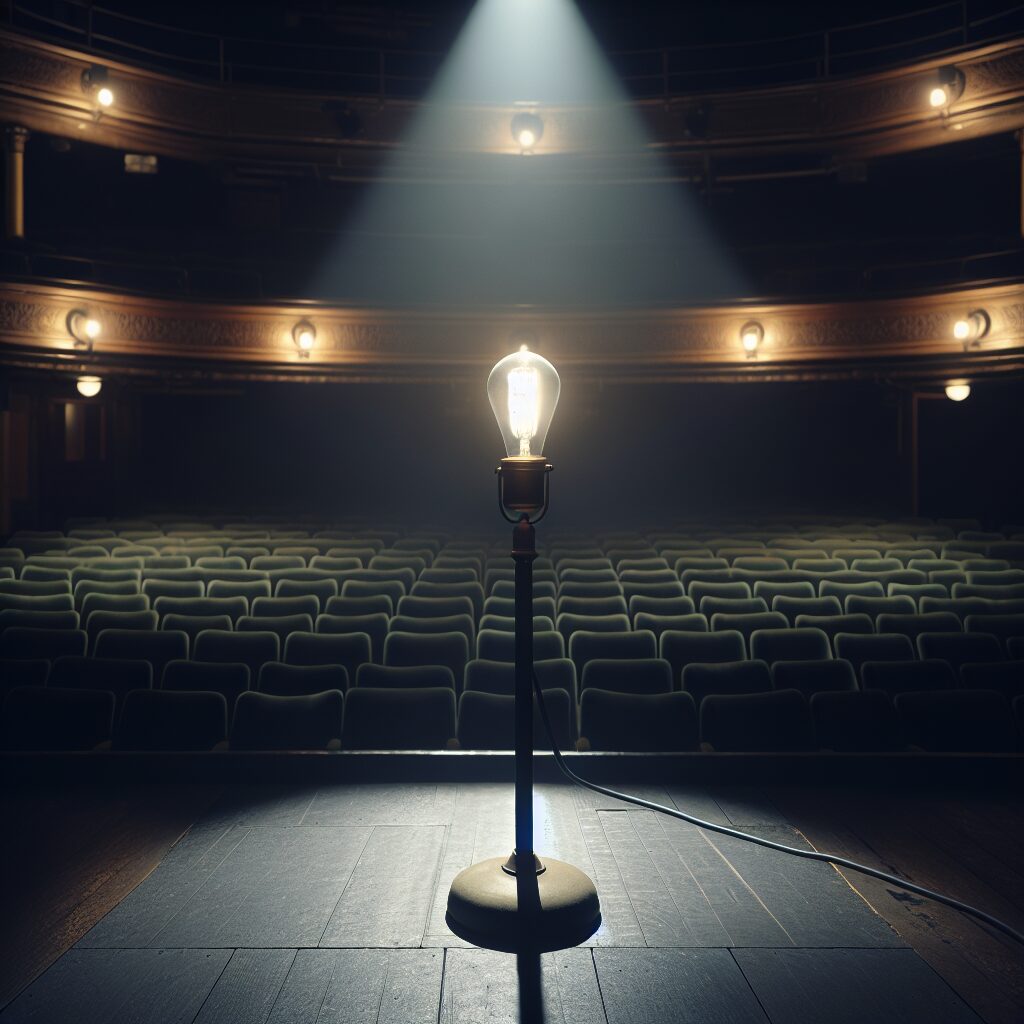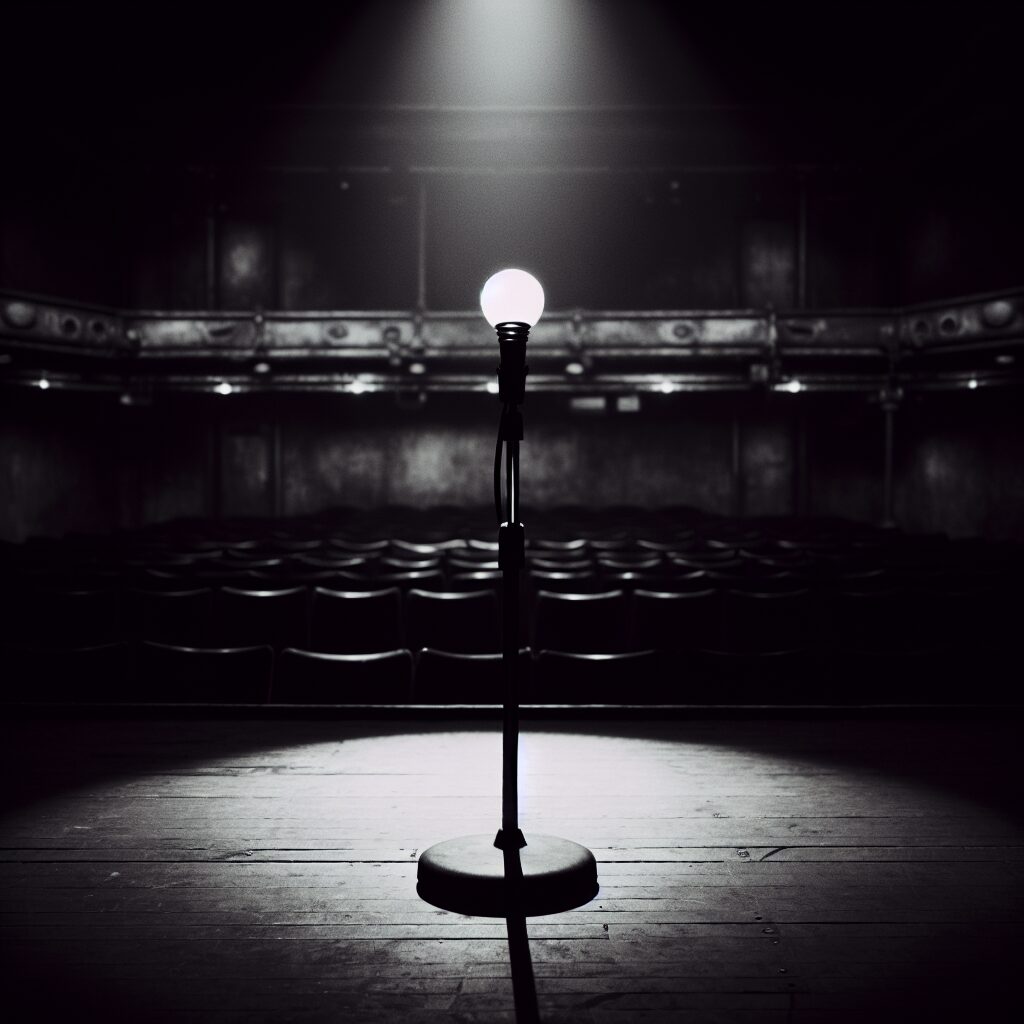When the final curtain falls, the applause fades, and the theater empties for the night, a single light remains behind—glowing steadily center stage. This lone bulb, perched atop a tall metal stand, is known as the ghost lamp or ghost light. To the casual observer, it might look like a forgotten prop or an oddly placed floor lamp. But to theater folk, it’s a sacred object steeped in history, practicality, and symbolism.
A Light Left On: Practical Origins of the Broadway Ghost Lamp
At its core, the ghost lamp serves a simple, functional purpose: safety. Broadway stages are filled with potential hazards: trap doors, uneven flooring, orchestra pits, stray props, tangled cables, and rolling set pieces. Without any house lights on, stepping onto a darkened stage can be dangerous. The ghost light ensures that anyone entering the stage—be it a late-night stagehand, an early-morning custodian, or a curious cast member—is able to see enough to avoid injury.
Typically consisting of a bare incandescent bulb mounted on a portable pole, the ghost light is plugged into a grounded outlet and placed center stage when the theater is “dark,” meaning no performances, rehearsals, or scheduled activities are occurring. It’s low-tech and reliable—no motion sensors, no smart bulbs, no fancy rigging—just one humble bulb silently watching over the space.
History: Lighting the Way Through Time
The precise origins of the ghost lamp are fuzzy, but its use can be traced back to the early 20th century, and possibly earlier. Before electricity, gas lighting was the norm in theaters, and leaving a light on overnight helped prevent gas buildup that could cause an explosion. Once theaters transitioned to electric lighting, the safety rationale remained.
Over time, this practical necessity became a tradition. No matter how modern or well-equipped a theater became, the ghost lamp remained. It’s been a fixture on Broadway stages from the days of Ethel Barrymore to Lin-Manuel Miranda.
The tradition is so widespread and ingrained in stage culture that when Broadway went dark during the COVID-19 pandemic in March 2020, photos of ghost lights burning across New York’s theaters went viral. They became symbols of resilience, continuity, and hope—small beacons promising that the show would one day go on.

Symbolism: Between Superstition and Reverence
Beyond its utilitarian role, the ghost lamp carries deep symbolic weight. One enduring superstition is that every theater has at least one ghost, and the lamp is left burning to appease or ward off these spectral residents. Some believe the light gives ghosts a chance to perform their own shows when no one is watching—others say it keeps them from playing pranks or causing mishaps during actual performances.
Whether or not you believe in spirits, the ghost light commands a certain reverence. It serves as a reminder of the theater’s history—of the many shows, actors, and audiences that have passed through its doors. It’s a nod to the idea that a theater is never truly empty, even when it’s silent.
There’s also something poetic about it. In a profession defined by fleeting moments—performances that live for a night and disappear into memory—the ghost light is a constant. It’s the last one in and the first one out. It’s the heartbeat that keeps ticking, even when everything else goes still.
Ritual and Community
Like many theatrical traditions, the ghost lamp also functions as a communal ritual. There’s often a designated person—usually a stage manager or house electrician—tasked with placing it at center stage each night and removing it before rehearsals or performances begin. That daily ritual becomes part of the theater’s rhythm.
Some productions and theaters even have their own ghost lamp legends—stories passed down from crew to crew about flickering bulbs or mysterious sounds. These tales, real or embellished, help forge bonds among cast and crew, creating a shared mythology that enhances the sense of belonging and continuity in a transient industry.

More Than a Bulb
For all its simplicity, the ghost light carries a layered meaning. It’s a literal light to prevent stumbles and a figurative one to honor the past. It’s a comforting presence in an unpredictable profession. And during moments of pause—whether due to holidays, renovations, or global pandemics—it becomes a symbol of anticipation, holding space for future stories yet to be told.
You can find a ghost light in nearly every Broadway house: the ornate opulence of the Majestic, the intimate charm of the Booth, the grandeur of the Gershwin. And while the marquees outside may change, and new shows rise and fall, the ghost light stays constant.
It’s not flashy. It doesn’t sing or dance. But it stands in the spotlight every night, silently upholding the sacred traditions of the stage.
So the next time you’re lucky enough to peek into an empty theater and see that lonely bulb burning, know that you’re looking at more than just a light. You’re looking at a legacy.
